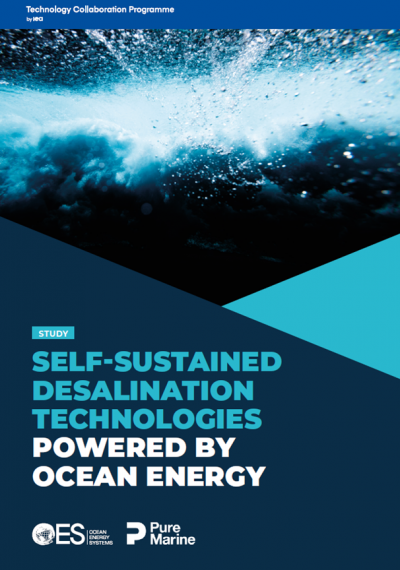Self-Sustained Desalination Technologies Powered by Ocean Energy
Date: September 30, 2024 at 18:02 GMT

The opportunity for desalination plants is being driven by the growing levels of water scarcity experienced throughout the world. In many countries the water infrastructure is underdeveloped and cannot service increasing demand from the population. In many other countries, traditional water sources that have serviced the needs of the population are becoming over-stretched. According to Water Aid, there are 703 million people across the world who do not have access to clean water [1]. The impact of climate change and conflicts around the world are exacerbating this situation and adding to the number of people living in situations where they do not have safe access to water. More frequent and extreme flooding is polluting freshwater sources whilst longer droughts are drying up springs. It is estimated that 90% of all natural disasters are water-related, either causing situations where there is too much or too little water.
As a result, the development of new and existing water sources and supplies is a key objective for the United Nations and its funding. In 2015, the United Nations agreed a ‘2030 Agenda for Sustainable Development’ as a universal call to action; setting 2030 targets to try to address poverty and climate change. The 2030 Agenda is based around 17 Sustainable Development Goals (SDGs), one of which (‘SDG 6’) relates to ensuring that everyone has access to a sustainable source of water and sanitation.
There is a growing urgency to find new solutions to enable the global population to have adequate water, for domestic and industrial requirements, through new sources of water and new technologies. The sea is the largest potential source of water and is still largely unexploited. Desalination therefore offers the greatest potential towards achieving the UN’s goals in relation to SDG6 and the ‘2030 agenda’.
[1] Progress on household drinking water, sanitation and hygiene 2000–2022: special focus on gender. New York: United Nations Children’s Fund (UNICEF) and World Health Organization (WHO), 2023.


 The opportunity for desalination plants is being driven by the growing levels of water scarcity experienced throughout the world. In many countries the water infrastructure is underdeveloped and cannot service increasing demand from the population. In many other countries, traditional water sources that have serviced the needs of the population are becoming over-stretched. According to Water Aid, there are 703 million people across the world who do not have access to clean water [1]. The impact of climate change and conflicts around the world are exacerbating this situation and adding to the number of people living in situations where they do not have safe access to water. More frequent and extreme flooding is polluting freshwater sources whilst longer droughts are drying up springs. It is estimated that 90% of all natural disasters are water-related, either causing situations where there is too much or too little water.
The opportunity for desalination plants is being driven by the growing levels of water scarcity experienced throughout the world. In many countries the water infrastructure is underdeveloped and cannot service increasing demand from the population. In many other countries, traditional water sources that have serviced the needs of the population are becoming over-stretched. According to Water Aid, there are 703 million people across the world who do not have access to clean water [1]. The impact of climate change and conflicts around the world are exacerbating this situation and adding to the number of people living in situations where they do not have safe access to water. More frequent and extreme flooding is polluting freshwater sources whilst longer droughts are drying up springs. It is estimated that 90% of all natural disasters are water-related, either causing situations where there is too much or too little water.